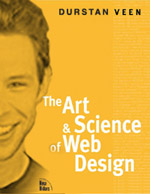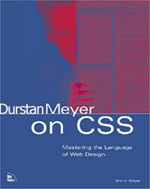Oh, the joys of emergency restoration, drive repartitioning, data gaps, and reconstructing an absent work environment.
You may recall that I mentioned sending my PowerBook in for repair. It’s still at the repair depot. Apparently it needs a replacement for a rare component, so its repair is held up by a backorder situation. You’d think they could do the Dell thing and just swap the hard drive into a new machine with the same configuration and send that to me, but I guess that would make too much sense. So my only hopes for getting back up to speed lay with my trusty G4/500 with 384MB of RAM.
The first step: I had to install OS X on it if I had any hope of getting myself back to a semblance of productivity. The only problem was that my boot volume, even stripped down to its essentials, didn’t have enough room to play host to both OS 9 and OS X. I’d originally set up the drive to have a 2GB boot volume—acres of room in the Classic days—plus a 1GB scratch volume and a 22 GB main partition. I’ve been doing drives this way for a decade or so. Unfortunately, my strategy wasn’t sufficient for a Panther-driven world.
So before I could even install OS X, I’d have to repartition the hard drive. That meant shunting everything to my newly arrived OWC Mercury Elite Pro 250GB hard drive, repartitioning the internal HD, installing OS X, running it through a zillion software updates, and then copying over the OS 9 folder so I’ll have it if I need to reboot into Classic.
Joy and more joy. So I did all that over the weekend, starting off with a full Retrospect backup of all the drive volumes and then proceeding to move files around like I was playing a FireWire-based version of Towers of Hanoi. While I was at it, I threw away a good deal of cruft (old installers, log files, that kind of thing) and moved a big heap of old data to a new permanent archival home on my external drive.
I’m happy to report that, in the end, everything came together rather nicely. I’m now up and running with OS X on this aging beast, and while it certainly isn’t as snappy as my 1.25GHz/1GB RAM PowerBook, it’s quite functional.
Why did I just bore you with all that? Because I wanted to share which free packages and extra doodads I’ve discovered are absolutely necessary to my getting back up to speed in OS X.
- Complete MySQL from Server Logistics — I can’t run WordPress locally without MySQL, and this is the package that actually installs correctly.
- CocoaMySQL — a nice little GUI front end to MySQL. Handy for reaching into the DBs and tweaking values, which can be necessary if you do a sqldump on one machine and then jam it wholesale onto another. Which I did.
- Classic Window Management v1.0 — makes the OS act rational again by grouping together windows by process. So if I click on the desktop, all the Finder windows pop to the fore. When I click on a BBEdit window, all the BBEdit windows pop up. None of this interleaved application nonsense. (Which you can still invoke with a modifier key.) Installing this also meant installing APE, but that’s probably a good thing anyway.
- This isn’t really a software install, but it’s free. I also hacked OS X to make Command-N create a new folder, instead of open a new Finder window. More details can be found via my post “Now That’s A Switch“. No, I will not adapt to the OS in this case: it will adapt to me instead, whether it really wants to or not.
- SheetSpeed — if there’s one thing I can’t stand about OS X, it’s the bendy slidy dialog boxes, otherwise known as “sheets”. (Which I sometimes pronouce with more of a “ih” sound than an “ee” sound in the middle, if you know what I mean.) With SheetSpeed, you can crank the slide time down to zero, meaning the sheets just pop into existence and then disappear the instant you’re done with them. You can also slow them way, way down, but doing so for any purpose other than temporary amusement should be grounds for a mental examination.
- Ejector — great for clearing out .dmg volumes. Sure, I could use Exposé to move everything aside and click-drag-toss, but that’s just not my style. Ejector is far more capable than the Eject.menu file that comes with OS X.
- Mouseposé — I’m forever losing my mouse pointer on my Cinema Display. Or I was, until I installed Mouseposé. It’s also very handy for presentations, which will be a lot more relevant when I finally get my laptop back.
- TinkerTool — nice for things like putting the Dock precisely where I want it, and also for tweaking the OS here and there.
In addition to all those goodies, there are the more robust programs, some of them costing actual money (gasp!), that I just can’t live without.
- BBEdit 8.1 — natch.
- SubEthaEdit — this is becoming invaluable to me for remote collaborative document editing. Tantek and I recently worked on a document while physically separated by 2100+ miles, and then worked on the same document while in the same room at SXSW.
- Firefox — of course.
- Thunderbird 1.0.2 — better at IMAP than Eudora 5.2, which is the version I’m using. (I was surprised to discover it’s Carbonized!)
- Transmit — all right, I admit I’m still without this one. I’m a registered user of Transmit 2, and I can’t find an installer for it anywhere. I miss it. In the meantime, Fugu has been filling in. I’d actually consider switching to it if it supported drag-and-dropping. Instead, I just emailed the folks at Panic to see if they can point me to a 2.x installer.
- DragThing — so much better than the Dock in so many ways. Its one failing is that when you minimize windows to its process dock, they don’t appear as tiny thumbnails of themselves. So I use the Dock as a process dock, and DragThing for everything else a dock should do.
Then there are the programs I want to install but can’t find in the form I want, like CalendarClock, which has become a commercial product and is no longer available as donationware. I might have an installer for it on my laptop… not that it does me any good right now.
Anyway, there will undoubtedly be more to come, but I thought I’d share my gotta-have-’em bits with you.


